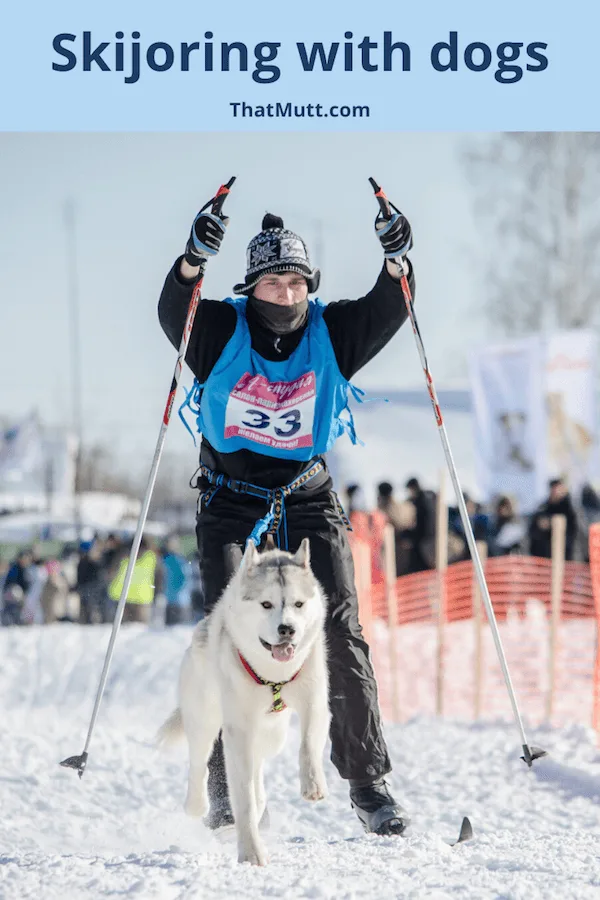Dog owners know that it doesn’t matter what time of year it is or what the weather is like. Dogs need to go out and get some exercise. For some dogs and their people, the answer of what to do in the winter is skijoring.
Skijoring—“ski driving” in Norwegian—involves a person on skis being pulled by a dog (or dogs or horse or motor vehicle).
Lowell Grieb discovered the sport when he was looking for something to do with his energetic dog in the winter. An online search and a call to a friend led him to skijoring.
“We took our dogs out, and Piper did very well for not being a huge dog. He’s only 40 pounds and short. It definitely was something that kept him busy and active,” says Lowell.
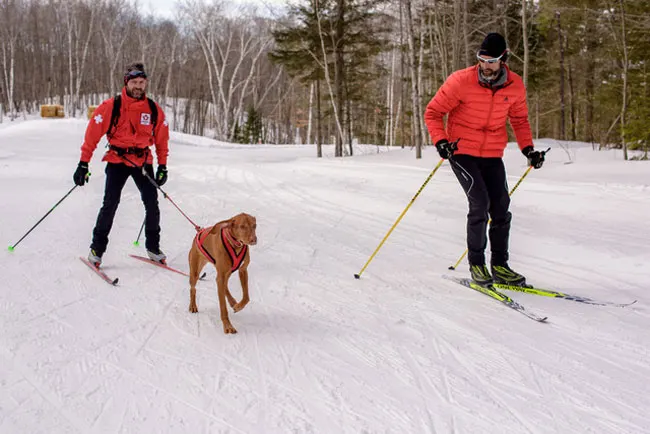
About skijoring with dogs
Think of skijoring like dog sledding without the sled. In fact, the sport is regulated by the International Federation of Sleddog Sports (IFSS). The handler wears cross country skis and skis along behind their dog (or a pair of dogs). The dogs wear a harness and help to pull the handler. However, skijoring is not about getting a free ride as you coast along behind your dog.
“It’s a tag team effort,” explains Lowell. “The more work you do the less work the dog does. Over the long haul [it shifts]. You want the dog to be doing more work when you’re getting more fatigued in a race.”
Skijoring equipment
The equipment for skijoring is specialized for the sport and focused on keeping dogs and handlers safe.
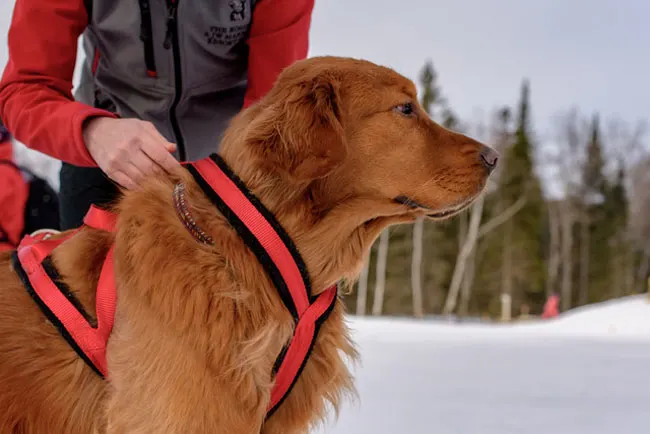
Here are the guidelines Lowell has developed based on the IFSS:
- All dogs should wear a harness that should be well-fitting and at least be padded around the neck and chest area.
- Only cross-country skis without steel edges or sharp tips, and non-dangerous for the dog(s), may be used.
- A dog should be attached to a skier by a tugline that is at least 2 metres (6.5 feet) in length that has shock absorbing ability.
- The tugline shall be attached to the driver by a hip belt at least 7 centimetres (2.75 inches) wide over the spine or any other harness type equipment.
- The hip belt shall have an open hook in order to make it easy to release the line, or a quick release connection (panicsnap).
- A neckline should be used when running dogs in tandem.
Training your dog for skijoring
The pull is the biggest factor in training your dog for skijoring. Most of us spend a lot of time teaching our dogs not to pull.
Lowell explains, “If your dog gets to the end of the tugline and they will put any pressure on that consistently that’s a huge win. Normally they’re being checked on a collar to pull back. A harness is designed so they can feel some load on their chest and they need to learn that they’re allowed to be pulling when they feel that load there… Even if it’s snail’s pace skiing at least the dog is understanding that they’re doing something right. And you can build on it from there.”
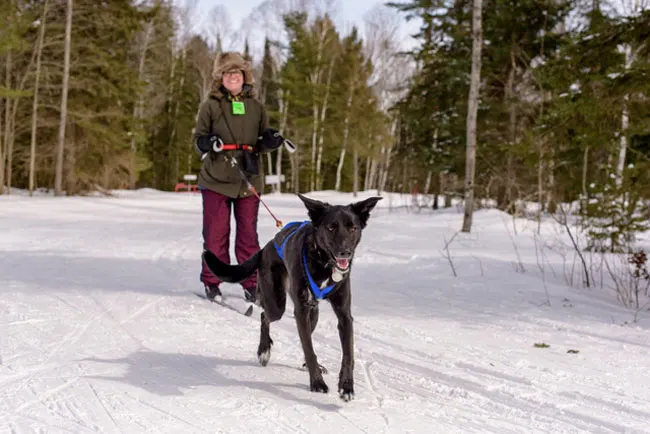
The other unique part of training for skijoring is the commands. With your dog running out in front of you, you have to rely on vocal commands to tell your dog what to do. Skijoring uses the same verbal commands as dog sledding:
- Whoa: Stop
- Easy: Slow down
- On by: Pass another team or a distraction
- Ahead: Move forward
- Gee: Turn right
- Haw: Turn left
- Hike: Go
A physical and mental workout – skiing with your dog
Lowell does most of his skijoring at Arrowhead Provincial Park in Ontario, which offers numerous groomed cross country trails. For the last two years, Arrowhead’s staff has put in a 700 metre (765 yard) loop dedicated to skijoring. A routine run for Lowell and his Hungarian Vizsla Juno is usually between seven and ten kilometres (four to six miles) of steady—not top speed—running.
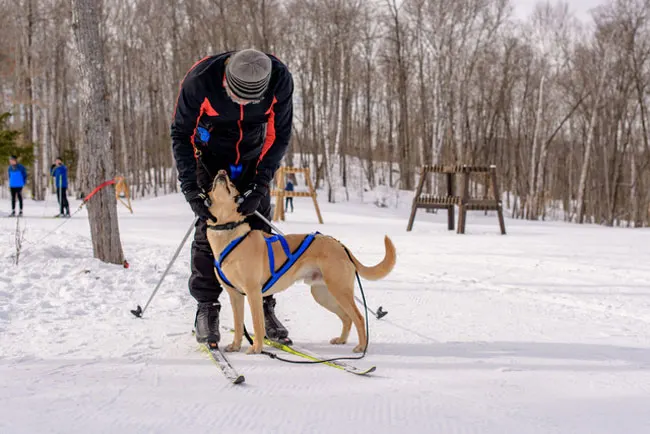
In addition to the physical exercise of a 10K run, Lowell emphasizes that skijoring is also very mentally demanding for dogs.
“They have to think all the time,” says Lowell. “They need to learn spatial awareness around where you are. They can’t look at you when they hear commands. They need to be looking ahead and they need to be paying attention enough to hear a command. Because they’re constantly paying attention, sometimes that wears them out even more than the physical exercise. I think that is a good thing for a canine.”
Skijoring with two dogs
Running two dogs brings an extra level of complexity and consideration to skijoring. You attach the dogs to each other with a neckline. Necklines are usually very short, Lowell estimates about eight inches, so the dogs run very close together.
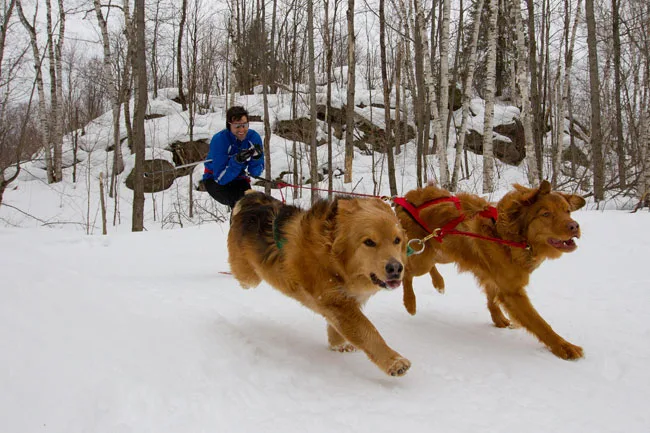
Some dogs may prefer to run only on the left—of the trail or of another dog. Or they may want to be a lead dog, slightly in front of their partner.
If you put a dog on the “wrong” side, they may squeeze the other dog into the snowbank. Or in the case of a dog who wants to be a leader, like Lowell’s Juno, he adjusts her pull line to be a bit shorter. “Juno will work harder to stay one and a half inches in front of the other dog, but if I physically make her not ever able to get there, she will work harder for me… Her tugline is about one to two inches shorter than another dog I would run who doesn’t need the same kind of motivation.”
If you’re considering running two dogs, practice in different scenarios and take the time to figure out their preferences.
How to get started
One way to introduce yourself to skijoring is to attend a dog sled race. “Watch an event because you might think, “That’s cool!” or “There’s not a chance I’m ever doing that!” You’ll see people from a vast array of abilities participating in these events,” says Lowell.
Events are posted on the International Federation of Sleddog Sports website, or local and national chapters.
Lowell’s second piece of advice is to get some instruction from somebody who’s familiar with the sport. “It’s helpful just to be able to get the basics down and not expect your dog to be coming out of the gate an 100 miles an hour,” he says.
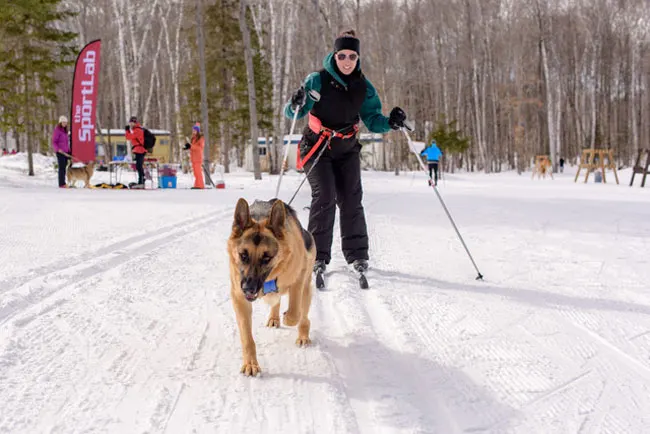
Lowell has been working with Arrowhead Provincial Park for the past 11 years, offering complimentary demonstrations throughout the winter season. People sign up with their dogs and Lowell along with other volunteers loan free gear from Working Dog Equipment, introduce participants to how to skijor, safety dos and don’ts, talk to them about how to train their dogs and give them an opportunity to try the sport.
Competing in skijoring
Once you’ve tried skijoring, it’s easy to enter a competition. Simply select your event and sign up.
Races are usually four miles and longer (IFSS sanctioned races must be a minimum of six miles or ten kilometres).
“It’s very much a participation piece,” says Lowell. “You may have national champions… You may also have people who can barely ski. Or the dog is a 150 pound monster that is not really a working dog per se but they love to get out with their owner and the owner loves to get out with them and that’s just fine.”
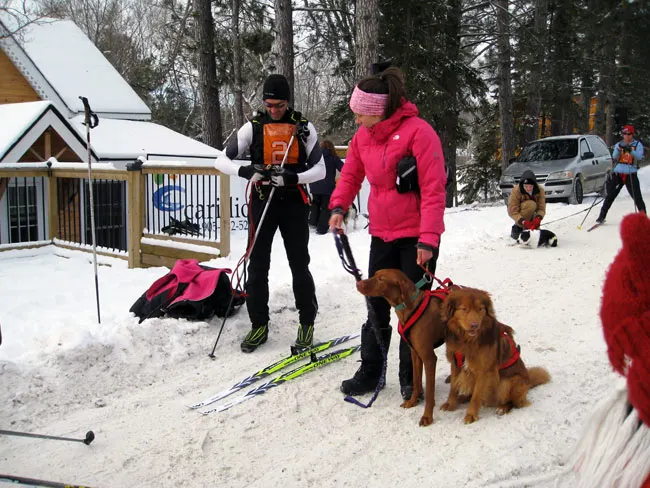
Skijoring with dogs in the summer – canicross
While skijoring is a winter sport, there are variations that allow dogs and their people to be active year round.
One option is to replace your skis with in-line skates, though Lowell cautions that the risk of falling and serious injury is high.
The most popular alternatives are canicross and bikejoring.
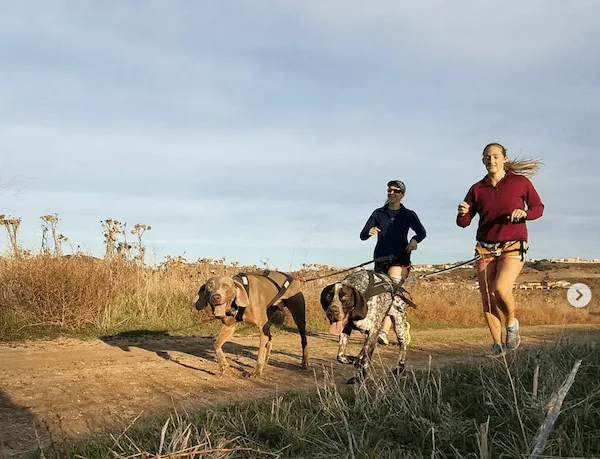
In canicross, the human runs (usually cross country or on a trail) with a dog in harness. Bikejoring uses a bike instead of skis. A mount on the front of your bike links you to your dog’s harness.
Best breeds for skijoring
As in every sport, the best dogs for skijoring are the ones that like it.
“Every dog is different. Every breed is different. Every dog within the breed is different… The two dogs that I initially started skijoring with are very different animals,” explains Lowell.
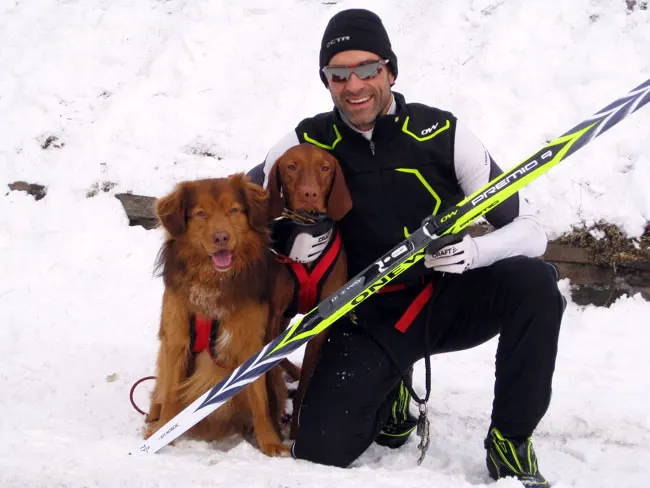
Most skijorers are medium-to-large athletic dogs. Professional skijoring dogs are usually common sled dog breeds who are genetically inclined to run. They should be at least 18 months old. The AKC notes that skijoring organizations recommend dogs weight more than 35 pounds, though Lowell has seen people skijor with Jack Russell Terriers. He notes, “You’re not going to put load on your dog” and expect it to pull you when it’s that small.
“I don’t think there’s anything special a dog needs,” says Lowell. “Part of dog’s DNA is to be active… They have tremendously large VO2 maxes and are designed to run and chase. We just need to as owners find what floats their boat.”
Teamwork in skijoring
Skijoring requires dogs and their handlers to work as a team. Just like humans, dogs have good days and not so great days on the skijoring trail. Sometimes, you may not be able to keep up with your dog. Or it’s not the dog’s day and you may have to slow down.
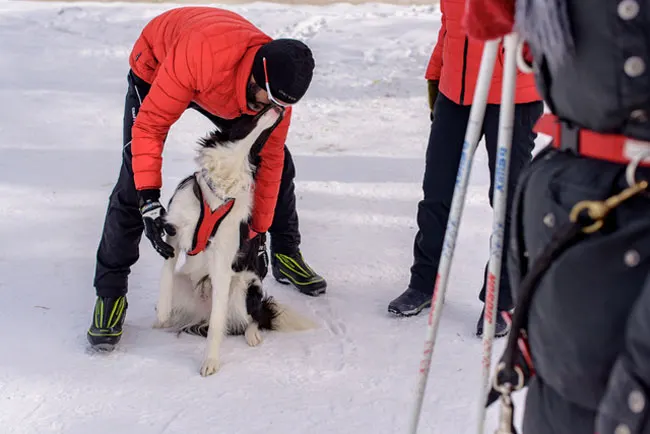
“We all have ups and downs and you really as a handler get to learn what makes your dog tick,” explains Lowell. “With positive reinforcement and motivation… you’re this dynamic team that’s able to work together and work efficiently.”
He advises handlers to be resilient and avoid setting expectations of how a particular run is going to go.
For Lowell, skijoring has been much more about exercise for him and his dog. It’s about partnership.
“You really get to learn the drive of a canine. A lot of canines do have drive you just need to harness that and find what really motivates them. I find that rewarding.” He concludes, “I would say I’ve become more resilient because of my animals… Understanding… an animal allows you to reflect a little bit and help you understand that you need to be able to zig and zag and mould and change.”
What winter activities do you do with your dog? Have you ever skijored?
What dog sports would you like to see in future posts? Let us know in the comments!
See some of our other dog sport articles:
Julia Preston writes for That Mutt about dog behavior and training, working dogs and life on her farm in Ontario, Canada. She has a sweet, laid-back boxer mix named Baxter. She is also a blogger at Home on 129 Acres where she writes about her adventures of country living and DIY renovating.
